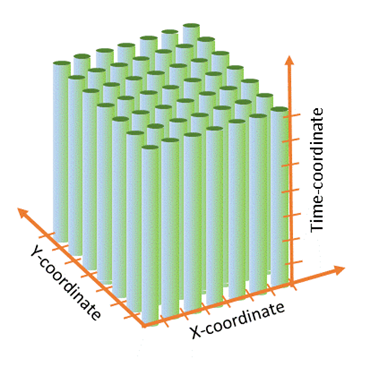Dr. Christian Kummerow, Professor, Department of Atmospheric Science and Director, Cooperative Institute for Research in the Atmosphere, Colorado State University
Research interests: Satellite remote sensing of precipitation and global water and energy cycles.
Current research focus: By integrating observations of the components of the water budget (evaporation, water vapor, clouds, and precipitation), Kummerow and his colleagues hope to improve the consistency of estimates about the water budget and address the interdependencies of these components. Because evaporation minus precipitation within a closed system has to ultimately equal the transport of water vapor out of the system, a measure of the consistency of these three components adds confidence in each of these estimated parameters. The ultimate goal is not only to create better products to estimate the contributions of the components of the water cycle in specific regions, but to gain a better understanding of the current relationships among these components in order to make more reliable predictions of future relationships. Data from the recently launched joint NASA/Japan Aerospace Exploration Agency Global Precipitation Mission (GPM) is a critical element of this research.
Data products used:
- Global Precipitation Climatology Project (GPCP) Combination Data, Version 2.2 [short name: GES_DISC_GPCPRAIN_V2.2]. These data are available through the Mesoscale Atmospheric Processes Laboratory.
- Water vapor and wind products from the Modern Era Retrospective Analysis for Research and Applications (MERRA), which are available through the Goddard Earth Sciences Data and Information Services Center (GES DISC).
- Various products from the SeaFlux Project, which produces and maintains a high-resolution satellite-based data set of surface turbulent fluxes over the global oceans under the auspices of the World Climate Research Programme (WCRP) Global Energy and Water Experiment (GEWEX) Data and Assessment Panel.
Research findings: The research team has been surprised by how well evaporation and precipitation agree, even on a regional scale, when water vapor transport is accounted for. Over the Indian Ocean, for instance, monthly variations in evaporation minus precipitation match the water vapor transport out of this region to within a few percent, with only small, random errors in the three parameters (evaporation, precipitation, and water vapor). This adds a great deal of confidence in each of the variables since they are derived independently of one another.
While this balance is seen in other tropical basins the team examined, one unexpected finding was that the tropical West Pacific was not in balance, and in fact was trending so as to be less and less balanced in a 10 year time series from 1998 to 2008. This imbalance meant that there was an error in one of the derived parameters. This error has been attributed to subtle changes in the structure of precipitation systems in this region, with larger, more organized storm systems becoming more prevalent in the last decade at the expense of more frequent isolated showers. Such subtle changes in precipitation not only cause problems for the retrieval algorithms, but are the real clues to how the climate system is currently changing.
Read about the research:
Kummerow, C.D., Randel, D.L., Kulie, M., Wing, N., Ferraro, R., Munchak, S. & Petkovic, V. (2015). The Evolution of the Goddard Profiling Algorithm to a Fully Parametric Scheme. Journal of Atmospheric and Oceanic Technology, 32(12). doi:10.1175/JTECH-D-15-0039.1
Brown, P.J. & Kummerow, C.D. (2014). An Assessment of Atmospheric Water Budget Components Over Tropical Oceans. Journal of Climate, 27(5). doi:10.1175/JCLI-D-13-00385.1
Hou, A.Y., Kakar, R.K., Neeck, S., Azarbarzin, A., Kummerow, C.D., Kojima, M., Oki, R., Nakamura, K. & Igushi, T. (2014). The Global Precipitation Measurement (GPM) Mission. Bulletin of the American Meteorological Society, 95(5). doi:10.1175/BAMS-D-13-00164.1
For more information
- Global Precipitation Mission (GPM)
- Global Precipitation Climatology Project (GPCP)
- Modern Era Retrospective Analysis for Research and Applications (MERRA)
- World Climate Research Programme (WCRP)
- Global Energy and Water Experiment (GEWEX)



